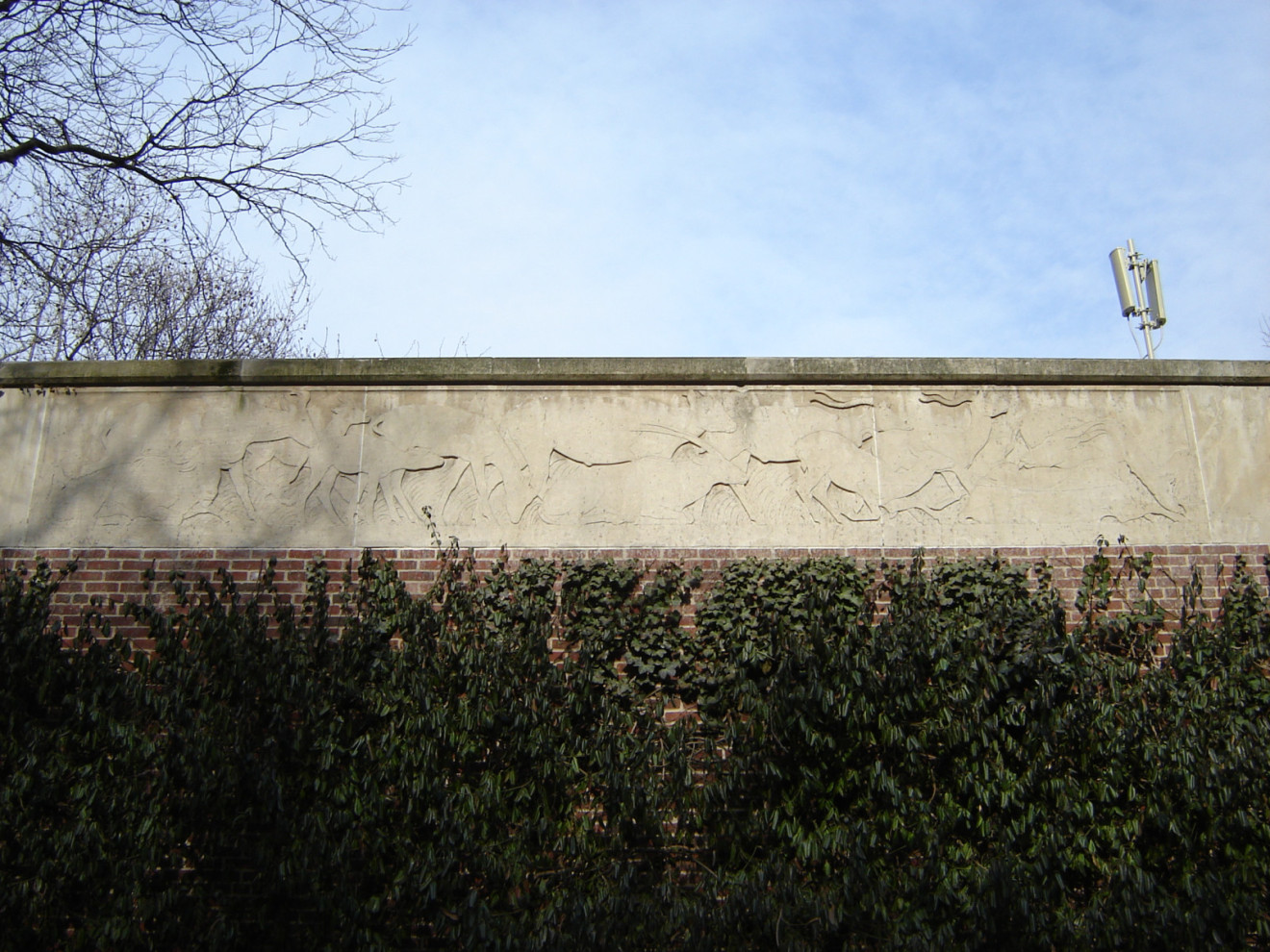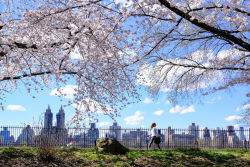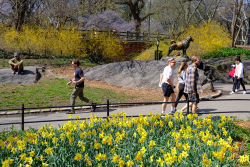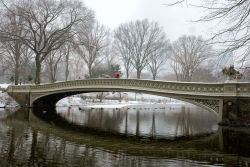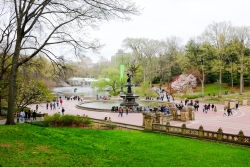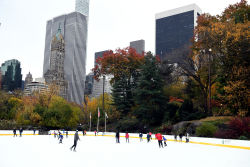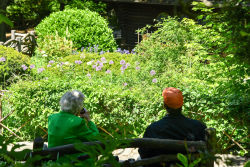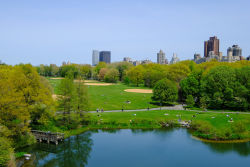Central Park
View all monuments in NYC Parks, as well as temporary public art installations on our NYC Public Art Map and Guide.
African Antelopes
| Artist: | Frederick George Richard Roth |
| Dedicated: | 1935 |
| Location: | Central Park Zoo; Central Park Wildlife Center; center of east façade |
Artwork History
Who made this artwork?
Frederick G. R. Roth (1872-1944) was born in Brooklyn and studied art privately in Vienna and at the Academy of Fine Arts in Berlin. His Roman Chariot group at the Pan-American Exposition of 1901, in Buffalo, New York first garnered him significant attention and placed him at “the forefront of America’s young sculptors.”
Following this success, Roth was much in demand. He created sculpture for the Metropolitan Museum of Art, the Louisiana Purchase Exposition (for which he received a silver medal in 1904), and the 1915 Panama-Pacific Exposition at which he collaborated with artists Alexander Stirling Calder (1870-1945) and Leo Lentelli (1879-1962) on the celebrated sculptural groups Nations of the East and West. He received numerous other honors and awards, including the 1924 Speyer Prize from the National Academy of Design for his portrait of the celebrated Alaskan sled dog, Balto, which was unveiled in Central Park on December 16, 1925.
What is this artwork?
In 1934, Roth began employment as the chief sculptor for Parks through the Works Progress Administration (W.P.A.). Roth oversaw a team of artisans who carved the limestone reliefs that adorn the animal houses of the Central Park Zoo as part of its restoration in 1934.
In 1936, Roth completed the granite statues of figures from Alice in Wonderland that stand at the center of the Sophie Irene Loeb fountain in Central Park’s James Michael Levin Playground on 76th Street and Fifth Avenue. In the spring of 1937, Roth’s Dancing Goat and Honey Bear were placed in fountain basins at the Central Park Zoo.
In the 1980s the zoo was redesigned again and most of the larger animals were relocated. Contemporary buildings were designed to integrate with the few salvaged brick and limestone structures. When the zoo reopened in August 1988, the reliefs, which depict a variety of antelopes including gnu, hartbeest, beisa oryx, eland, and gazelle, were incorporated into the new structures, and, though no longer coinciding with animal species housed inside, help to enliven the architecture and provide a historical context for the current zoo.
Artwork Details
| Description: | Bas-relief in three continuous sections |
| Architect: | Aymar Embury II |
| Materials: | Indiana limestone |
| Dimensions: | Total H: 2'1" W: 23'2" (approximate) |
| Cast: | 1935 |
Please note, the NAME field includes a primary designation as well as alternate namingsoften in common or popular usage. The DEDICATED field refers to the most recent dedication, most often, butnot necessarily the original dedication date. If the monument did not have a formal dedication, the yearlisted reflects the date of installation.
For more information, please contact Art & Antiquities at (212) 360-8163.
Check out your park's Vital Signs
Clean & Safe
Green & Resilient
Empowered & Engaged Users
Share your feedback or learn more about how this park is part of a
Vital Park System
Contacts
Central Park Information: (212) 310-6600
Central Park Information (for the Hearing Impaired): (800) 281-5722
Belvedere Castle, The Henry Luce Nature Observatory: (212) 772-0210
The Charles A. Dana Discovery Center: (212) 860-1370
The Dairy Visitor Center and Gift Shop: (212) 794-6564
North Meadow Recreation Center: (212) 348-4867
Loeb Boathouse (Bike rentals, boat rentals & gondolas): (212) 517-2233
Carousel: (212) 879-0244
Fishing at Harlem Meer (Catch & Release): (212) 860-1370
Harlem Meer Performance Festival: (212) 860-1370
Horseback Riding - Claremont Stables: (212) 724-5100
Metropolitan Opera (Performances on the Great Lawn): (212) 362-6000
New York Philharmonic (Performances on the Great Lawn): (212) 875-5709
Shakespeare in the Park - The Public Theater at the Delacorte Theater: (212) 539-8655
Central Park SummerStage: (212) 360-2777
Swedish Cottage Marionette Theater: (212) 988-9093
Tennis: (212) 280-0205
Weddings, Ceremonies and Photography at the Conservatory Garden: (212) 360-2766
Wildlife Center & Tisch Children's Zoo: (212) 439-6500
